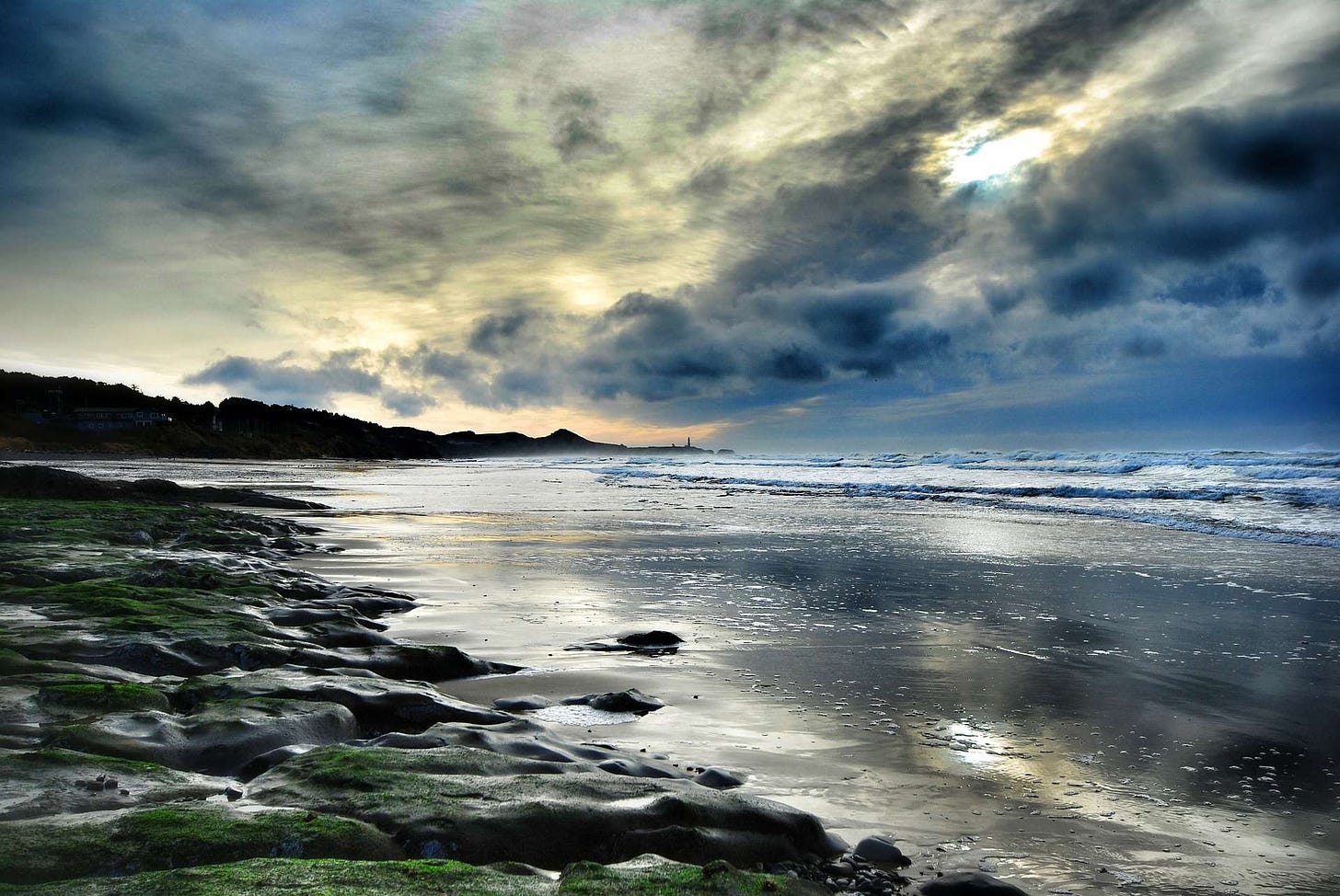Are We Headed for Stinking Warm Oceans, Dead Sea Life, and No Currents in 50 years?

In the coming decades, the world will face multiple environmental pressures (rather disasters!) and a lot of them will be due to global warming of the planet. One impact of that will be higher temperatures for oceans.
When the temperatures rise, the oxygen levels in the oceans will go down as well. This is because the warmer water will hold lesser oxygen.
The bad thing about this situation is that with higher temperatures, the need for oxygen for the sea animals increases – just as it would be for us humans when we are in warmer temperatures – and the oxygen that was available generally would – making the oxygen shortfall for the animals that much higher!
This will push the fishes and other sea creatures to move away from the equator. It seems that these changes will be obvious to everyone by 2030-2040 timeframe.
Higher Ocean temperatures will also lead to slower movement and circulation of the oceans. Slower ocean circulation leads to higher oxygen loss. The gap between the oxygen-rich layers near the surface and that in the deeper layers with lower oxygen levels will create issues in mixing. This process of water mixing helps maintain the equilibrium in the oceans.
The report is done by lead author Curtis Deutsch, a UW associate professor of oceanography, Raymond Huey, a UW professor of biology, Hans-Otto Pӧrtner of the Alfred Wegener Institute in Germany; Aaron Ferrel, a former graduate student at the University of California, Los Angeles; and Brad Seibel at the University of Rhode Island and published in Science.
The abstract from the study points to something that is going to be critical for the future of the planet.
Warming of the oceans and consequent loss of dissolved oxygen (O2) will alter marine ecosystems, but a mechanistic framework to predict the impact of multiple stressors on viable habitat is lacking. Here, we integrate physiological, climatic, and biogeographic data to calibrate and then map a key metabolic index—the ratio of O2 supply to resting metabolic O2 demand—across geographic ranges of several marine ectotherms. These species differ in thermal and hypoxic tolerances, but their contemporary distributions are all bounded at the equatorward edge by a minimum metabolic index of ~2 to 5, indicative of a critical energetic requirement for organismal activity. The combined effects of warming and O2 loss this century are projected to reduce the upper ocean’s metabolic index by ~20% globally and by ~50% in northern high-latitude regions, forcing poleward and vertical contraction of metabolically viable habitats and species ranges.
This level of change in the temperatures in Oceans and also slowing of the cycles of the currents will have far reaching impact. One of which could be totally disrupting the Ocean life.
Ocean Life Could be Dead by 2048
Now combine this with the situation where the fishes are being destroyed from the oceans through hunting for food and we have a terrible disaster facing us.
Unless humans act now, seafood may disappear by 2048, concludes the lead author of a new study that paints a grim picture for ocean and human health.
According to the study, the loss of ocean biodiversity is accelerating, and 29 percent of the seafood species humans consume have already crashed. If the long-term trend continues, in 30 years there will be little or no seafood available for sustainable harvest.
The study was done by a researcher, Boris Worm, from Dalhousie University Halifax, Nova Scotia. And the prediction from that study – which included inputs from other colleagues said that life as we know on our planet will disappear. Boris Worm along with his colleagues in U.K, U.S., Sweden, and Panama did extensive research to come up with the stark prediction.
After doing 32 thorough experiments on a variety of marine environments, the team of researchers looked at the history from the past 1,000 years in 12 different coastal regions around the world. Then they analyzed fishery data from 64 marine ecosystems and how nearly 50 protected ocean areas recovered after their protection.
So a combination of Climate Change, Overfishing, Pollution and Habitat Loss is contributing to this dire state that Worm and team is predicting.
Now combine the slowing of ocean currents and temperature increase within the Oceans and what we have is a situation where within the next 4-5 decades we could be looking at a whole planet full of a swamp – which stinks and without proper water.
Imagine being in a house with a little aquarium full of dead fish and algae in lukewarm water. It becomes unbearable! We would be on a planet full of that type of stinking water bodies if these predictions ACTUALLY come to pass!
Featured Image Source: Pixabay



